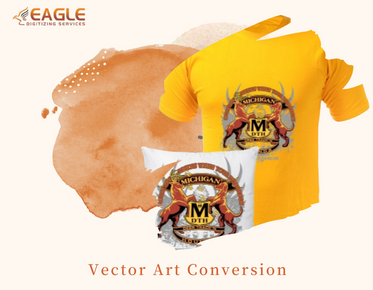Timeless vs. Tech: Traditional Embroidery vs. Digitized Embroidery
Embroidery is more than just a decorative art; it's a journey through history, culture, and craftsmanship. From intricate hand-stitched pieces passed down through generations to the precise, rapid designs created by modern machines, embroidery has evolved tremendously. Traditional embroidery holds a rich legacy, while digitized embroidery represents the innovation of the digital age. This exploration unveils the beauty and intricacies of both methods, offering insights into their distinct qualities and applications.
Understanding Traditional Embroidery
Craftsmanship at Its Finest: Techniques and Styles
Traditional embroidery encompasses a plethora of techniques and styles, each with its own flair. From the delicate satin stitch to the textured French knot, these techniques are the backbone of hand embroidery. Styles like crewelwork and whitework showcase the versatility of this craft, demonstrating how varying materials and methods can yield stunning results. The intricacy of hand-stitched designs embodies the labor of love that defines traditional embroidery.
The Tools of the Trade: Needles, Threads, and Fabrics
The tools of traditional embroidery are essential for achieving the desired outcome. Needles come in various sizes and types, each tailored to specific fabrics and techniques. High-quality threads—whether cotton, silk, or wool—add vibrancy and texture to each piece. The choice of fabric, ranging from linen to cotton, can dramatically impact the final look, as different materials respond uniquely to stitches. Understanding these tools is key to mastering the craft.
Types of Traditional Embroidery: From Cross-Stitch to Sashiko
Traditional embroidery boasts an impressive array of styles. Cross-stitch is beloved for its simplicity and versatility, often used to create intricate patterns on even-weave fabrics. Sashiko, originating from Japan, features simple running stitches and is often employed in boro textiles, promoting sustainability through visible mending. Other techniques, such as blackwork and hardanger, further enrich the tapestry of traditional embroidery, showcasing the global influences that shape this art form.
Understanding Digitized Embroidery
What Is Digitized Embroidery? The Basics Explained
Digitized embroidery is the modern iteration of this ancient art, utilizing computer software to create intricate designs. Unlike traditional embroidery, which relies on hand stitching, digitized embroidery translates designs into digital files that can be read by embroidery machines. This allows for the rapid production of complex patterns and precise stitching, opening up a world of possibilities for customization and scalability.
The Role of Software in Creating Digitized Designs
Software plays a crucial role in digitized embroidery, enabling designers to create and manipulate patterns with ease. Programs like Adobe Illustrator and specialized embroidery software allow users to convert images into stitch files, determining stitch types, densities, and paths. These tools facilitate creativity and efficiency, making it possible to create intricate designs that would be labor-intensive to replicate by hand.
Comparing Threads and Fabrics: What Works Best for Digitized Projects?
When it comes to digitized embroidery, the choice of threads and fabrics is essential for achieving optimal results. Polyester threads are often favored for their durability and vibrant color retention, making them ideal for commercial projects. Cotton threads, while softer, may be more suitable for home decor items. Fabric selection also impacts the outcome; tightly woven fabrics like canvas and twill provide a stable base for intricate designs, while looser weaves may require additional stabilization to prevent distortion.
Quality Comparison: Traditional vs. Digitized
Visual Appeal: Texture and Detail in Each Method
The visual appeal of traditional and digitized embroidery lies in their distinct textures and details. Traditional embroidery boasts a handcrafted charm, with each stitch reflecting the artisan's touch. The variations in tension and technique create a unique aesthetic. Conversely, digitized embroidery excels in precision and uniformity, allowing for intricate designs that can be replicated effortlessly. While traditional pieces exude warmth and character, digitized creations deliver sleek and polished results.
Durability: How Each Technique Holds Up Over Time
When it comes to durability, both techniques have their strengths. Hand-embroidered items are often cherished for their artisanal quality, but they can be susceptible to wear if not cared for properly. Digitized embroidery, utilizing machine stitching, tends to be more resilient and can withstand the rigors of everyday use. The durability of digitized pieces makes them particularly suitable for commercial applications, where longevity is key.
The Cost Factor: Comparing Expenses in Traditional and Digitized Work
Cost is a crucial consideration when comparing traditional and digitized embroidery. Traditional embroidery often requires significant time investment, leading to higher labor costs.
However, it offers the unique value of handcrafted artistry. Digitized embroidery, while generally more affordable in terms of production, may incur initial software and equipment expenses. Ultimately, the choice between the two methods often hinges on budget constraints and project requirements.
Applications and Use Cases
Best Use Cases for Traditional Embroidery: When to Choose Hand-Stitching
Traditional embroidery shines in applications where artistry and personal touch are paramount. Hand-stitched pieces are ideal for heirlooms, custom gifts, and one-of-a-kind projects that require a unique flair. They are often favored for home decor items, such as wall hangings and cushions, where the craftsmanship enhances the aesthetic appeal. Choosing traditional embroidery elevates the value of a project, making it a heartfelt keepsake.
The Power of Digitized Embroidery in Branding and Customization
Digitized embroidery is a powerhouse for branding and customization. Businesses can utilize digitized designs to create professional-looking logos on apparel, promotional items, and merchandise. This method allows for consistent quality across large quantities, making it a favorite for corporate branding. Additionally, digitized embroidery offers quick turnaround times, enabling businesses to respond swiftly to market demands.
Unique Projects: Exploring Creative Ideas for Both Methods
Both traditional and digitized embroidery can be harnessed for unique projects that showcase creativity. Traditional embroidery lends itself well to personal projects, such as custom quilts or family crest designs, where each stitch tells a story. Digitized embroidery, on the other hand, is perfect for innovative designs on tech accessories, like embroidered phone cases or laptop sleeves. The possibilities are endless, limited only by imagination.
Time Investment: Speed vs. Craftsmanship
The Time Factor in Traditional Embroidery: Crafting with Care
Traditional embroidery requires a significant time investment. The meticulous process of stitching each piece by hand can be labor-intensive, but it is this very labor that imbues each work with character and uniqueness. While crafting takes longer, the satisfaction derived from creating something by hand is unparalleled. This dedication to detail often results in pieces that are not only beautiful but also rich in personal history.
Efficiency in Digitized Embroidery: Quick Turnaround Times
Digitized embroidery, in contrast, emphasizes efficiency and speed. Once digitized, a design may be reproduced rapidly and precisely. This method is particularly beneficial for businesses or projects with tight deadlines. The ability to produce large quantities of items in a short timeframe is a significant advantage of digitized embroidery, allowing for rapid market response without sacrificing quality.
Finding Balance: Combining Craftsmanship with Technology
Finding a balance between traditional craftsmanship and modern technology can yield remarkable results. Combining hand-stitched details with digitized elements allows for creativity to flourish. For instance, an artist might create a base design through digitized embroidery, and then enhance it with hand-stitched accents, blending the best of both worlds. This hybrid approach not only preserves the artistry of traditional techniques but also embraces the efficiency of digitization.
Maintenance and Care
Caring for Hand-Embroidered Items: Tips for Longevity
Proper care is essential for maintaining the beauty of hand-embroidered items. To preserve the integrity of the stitches, avoid exposing them to direct sunlight for prolonged periods. Gentle hand washing with mild soap is recommended, followed by air drying to prevent damage. Storing embroidered pieces in acid-free tissue paper can help protect them from dust and degradation, ensuring they remain cherished heirlooms for years to come.
Maintaining Digitized Embroidery: Cleaning and Preservation
Digitized embroidery also requires thoughtful maintenance. Most embroidered items can be machine-washed on a gentle cycle, but it’s best to turn them inside out to protect the design. Ironing should be done on a low setting, avoiding direct contact with the embroidery to prevent flattening. Following these guidelines helps maintain the vibrancy and quality of digitized pieces, ensuring they remain functional and aesthetically pleasing.
Avoiding Common Pitfalls: Best Practices for Both Techniques
Awareness of common pitfalls in care can significantly extend the life of embroidered items. For both traditional and digitized pieces, avoid harsh chemicals and abrasive cleaning methods that could damage the threads or fabric. Regularly inspecting items for signs of wear allows for timely repairs, preventing small issues from escalating. With mindful care, both techniques can continue to captivate and inspire for generations.
Emerging Trends: The Evolution of Embroidery
Innovations in Traditional Techniques: Keeping the Craft Alive
As the world evolves, so do traditional embroidery techniques. Artisans are continually finding innovative ways to keep the craft alive while respecting its roots. Workshops and online platforms are emerging, encouraging collaboration and sharing of knowledge among stitchers. By blending age-old methods with contemporary themes and materials, traditional embroidery is experiencing a renaissance, attracting a new generation of enthusiasts.
The Role of Technology in Shaping the Future of Embroidery
Technology plays a pivotal role in the future of embroidery, reshaping how designs are created and produced. Advanced digitizing software is becoming increasingly user-friendly, allowing even novices to experiment with embroidery design. The integration of 3D printing and laser cutting with embroidery techniques is opening new avenues for creativity, pushing the boundaries of what is possible in textile arts.
Hybrid Techniques: Combining Traditional and Digitized Approaches
Hybrid techniques are gaining traction in the embroidery world, merging the tactile beauty of hand-stitching with the precision of digitized designs. By combining these methods, artists can create unique textures and effects that celebrate both craftsmanship and innovation. This approach not only offers endless creative possibilities but also highlights the versatility of embroidery as a medium for self-expression. Here are Some Key Points You Should Keep in Mind Concerning Embroidery Digitizing!
Embroidery is more than just a craft; it’s a celebration of art, culture, and connection. Whether through the rich tapestry of traditional techniques or the innovative realm of digitized designs, this timeless art form unites generations. As artisans continue to stitch their stories into fabric, the legacy of embroidery endures, inspiring creativity and passion in every thread.



